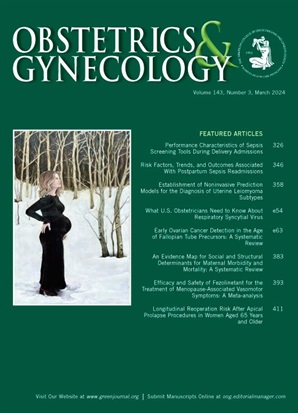预计2025-2035年美国妇产科医生的短缺和分布挑战。
IF 4.7
2区 医学
Q1 OBSTETRICS & GYNECOLOGY
引用次数: 0
摘要
精确的妇产科医生(ob-gyn)劳动力规划需要全面的供需预测。使用卫生资源和服务管理局的卫生人力模拟模型和公开可用的数据集,我们评估了美国所有州的妇产科数量是否足够,以预测2025年至2035年的变化。2025年,全国供给量满足需求量的93.4%,地域差异明显。到2035年,除6个州外,其他所有州预计都将面临妇产科医生供应不足的问题,非大都市地区的短缺尤其严重。缓解策略包括扩大妇产科管道,保留现有劳动力,整合先进的临床医生,利用技术扩大覆盖面,以及优化护理提供模式。本文章由计算机程序翻译,如有差异,请以英文原文为准。
Projected Shortages and Distributional Challenges of Obstetrician-Gynecologists in the United States, 2025-2035.
Precision in obstetrician-gynecologist (ob-gyn) workforce planning requires comprehensive projections of supply and demand. Using the Health Workforce Simulation Model from the Health Resources & Services Administration and publicly available datasets, we assessed the adequacy of the number of ob-gyns across all U.S. states to forecast changes from 2025 to 2035. In 2025, the national supply met 93.4% of the demand, with significant geographic disparities. By 2035, all but six states are projected to experience inadequate supplies of ob-gyns, with a particularly severe shortfall in nonmetropolitan areas. Mitigation strategies include expanding the ob-gyn pipeline, retaining the existing workforce, integrating advanced-practice clinicians using technology to extend reach, and optimizing care-delivery models.
求助全文
通过发布文献求助,成功后即可免费获取论文全文。
去求助
来源期刊

Obstetrics and gynecology
医学-妇产科学
CiteScore
11.10
自引率
4.20%
发文量
867
审稿时长
1 months
期刊介绍:
"Obstetrics & Gynecology," affectionately known as "The Green Journal," is the official publication of the American College of Obstetricians and Gynecologists (ACOG). Since its inception in 1953, the journal has been dedicated to advancing the clinical practice of obstetrics and gynecology, as well as related fields. The journal's mission is to promote excellence in these areas by publishing a diverse range of articles that cover translational and clinical topics.
"Obstetrics & Gynecology" provides a platform for the dissemination of evidence-based research, clinical guidelines, and expert opinions that are essential for the continuous improvement of women's health care. The journal's content is designed to inform and educate obstetricians, gynecologists, and other healthcare professionals, ensuring that they stay abreast of the latest developments and best practices in their field.
 求助内容:
求助内容: 应助结果提醒方式:
应助结果提醒方式:


